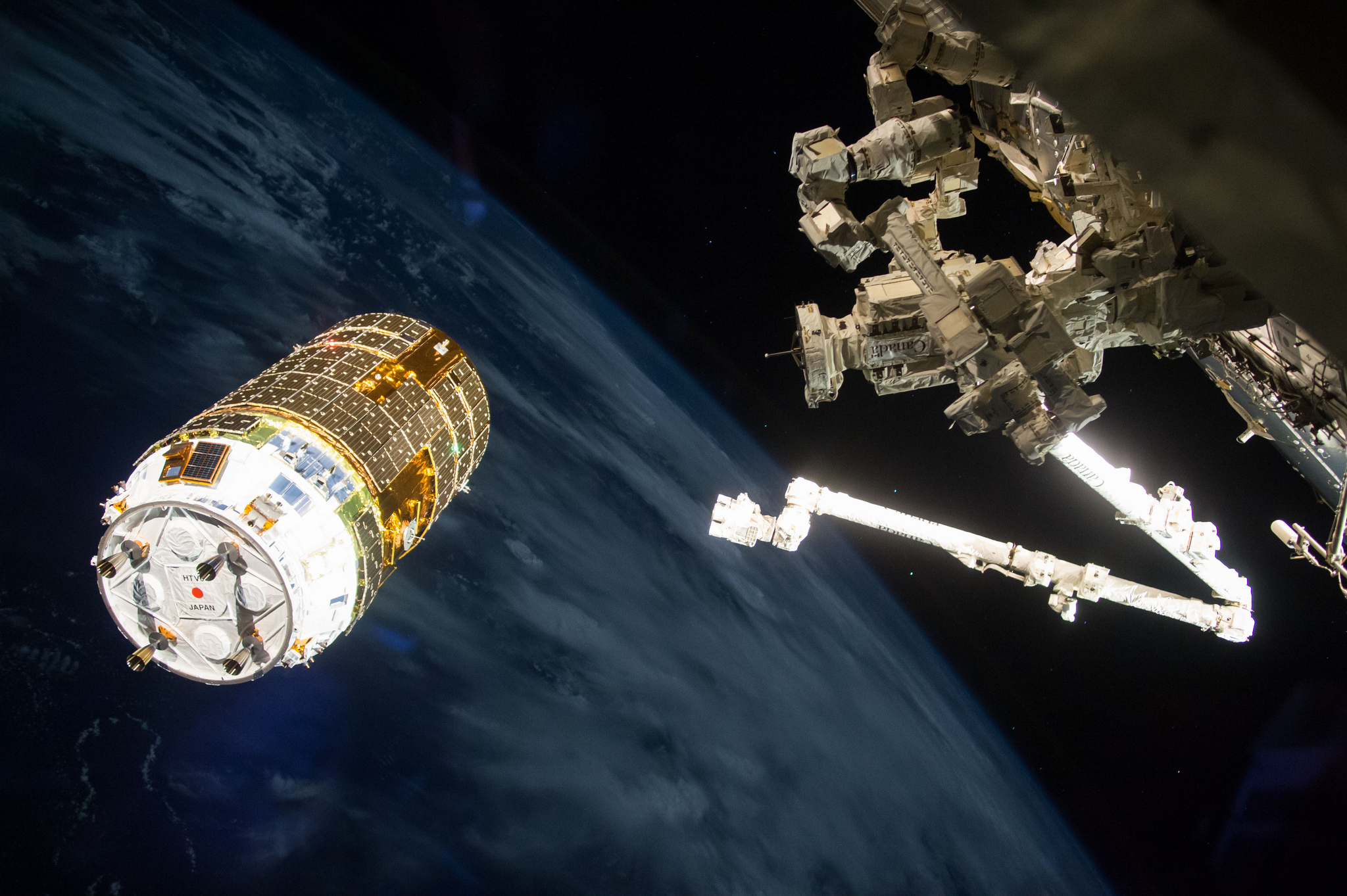
A Japanese cargo spacecraft loaded with more than four tons of supplies, spare parts, and experiment hardware is scheduled to launch from the Tanegashima Space Center in southern Japan to the International Space Station at 12:05 p.m. EDT Tuesday, Sept. 24 (1:05 a.m. Sept. 25 in Japan). Live coverage on NASA Television and the agency’s website will begin at 11:30 a.m.
The Japan Aerospace Exploration Agency (JAXA) unpiloted H-II Transport Vehicle-8 (HTV-8) originally was scheduled to launch Sept. 10, but the launch was postponed because of a fire at the mobile launch pad exit hole during the countdown operation. Launch provider Mitsubishi Heavy Industries identified the root cause for the fire and set the new launch date after corrective measures were put in place.
Following a successful launch Sept. 24, the spacecraft will arrive at the station Saturday, Sept. 28. NASA TV coverage of the HTV’s rendezvous and capture will begin at 5:45 a.m. Expedition 60 Flight Engineer Christina Koch of NASA, backed up by her NASA crewmate Andrew Morgan, will operate the station’s Canadarm2 robotic arm from the station’s cupola to capture the 12-ton spacecraft as it approaches from below. Robotics flight controllers will then take over the operation of the arm to install HTV-8 to the Earth-facing port of the Harmony module where it will spend a month attached to the orbiting laboratory. Flight Engineer Luca Parmitano of ESA (European Space Agency) will monitor HTV-8 systems during its approach to the station.
Capture of the HTV-8 is scheduled around 7:15 a.m. Coverage will resume at 9:30 a.m. for the final installation of the resupply craft to Harmony by robotic ground controllers. If the installation operations are running ahead of schedule, coverage would begin earlier.
Named Kounotori, meaning “white stork” in Japanese, the craft will deliver six new lithium-ion batteries and corresponding adapter plates that will replace aging nickel-hydrogen batteries for two power channels on the station’s far port truss segment. The batteries will be installed through a series of robotics and spacewalks the station’s crew members will conduct later this year.
Additional experiments on board HTV-8 include an upgrade to the Cell Biology Experiment Facility (CBEF-L), a small-sized satellite optical communication system (SOLISS), and a payload for testing the effects of gravity on powder and granular material (Hourglass).
Get breaking news, images and features from the station on social media at:
http://www.twitter.com/ISS_Research
http://www.twitter.com/Space_Station
-end-
Stephanie Schierholz
Headquarters, Washington
202-358-1100
stephanie.schierholz@nasa.gov
Courtney Beasley
Johnson Space Center, Houston
281-483-5111
courtney.m.beasley@nasa.gov

























